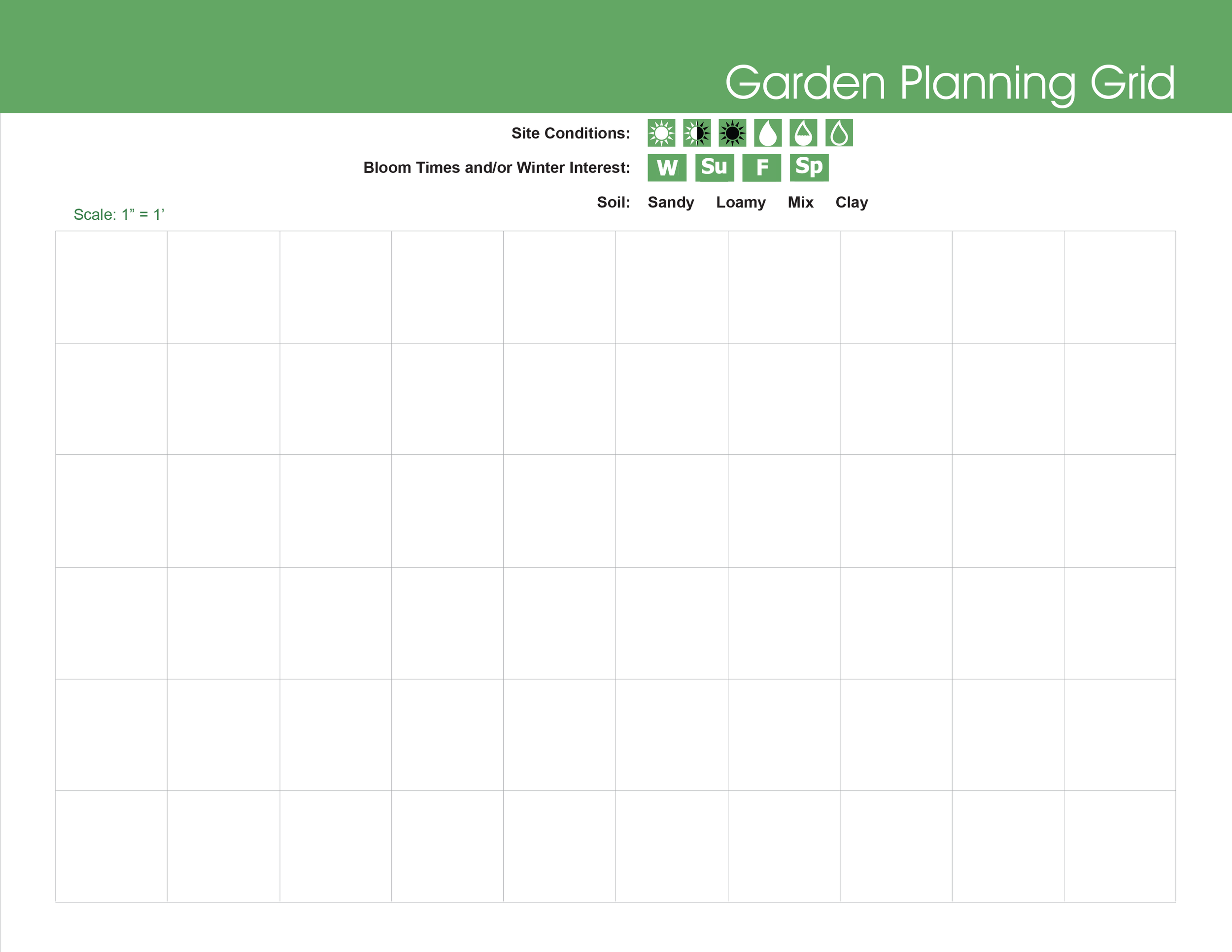Planning Your Landscape - How to Begin
Any landscape plan will require collecting information about the site, selecting plants that suit the site, and visualizing how the plants will fit together. To make those tasks easier, below are three resources:
Native Plant Garden Planning Worksheet
WORD Version
PDF VersionNative Plant Wish List
WORD Version
PDF Version(also included at the end of Planning Worksheet)
Plant Virginia Natives also provides lists of plants to help in specific situations –
Wet shade
Dry shade
Groundcovers (provided by Plant NOVA Natives - check to be sure species noted are native to your region)
Dry sun
Wet sun - Raingardens
READY TO GARDEN!
Before you get started, thinking through some guidelines will help you achieve a more satisfying result with less frustration.
Remember, you do not have to think about all these things. Landscapes can feel complicated, but the best way to learn is to get in the garden and try some things out.
Start Small
Insert native plants into existing plant beds, grouping as much as possible.
Add native plants around an existing tree.
Expand an existing bed outward, reducing your lawn area.
Join up two beds by planting between them to create one larger bed.
Control and remove invasive species and begin to replace them with natives.
Start Simple
Use larger numbers of fewer plants for cohesion and ease of maintenance.
Plant lots of woodies – trees, canopy and understory and a lively shrub layer. These provide structure to your landscape and habitat mass for wildlife.
Use the height of native perennials as a benefit to your design. They can be used as foundation plants, screening, or in the center of beds.
Such commonly used ornamentals as Asiatic azaleas, hollies, and cherry trees have native counterparts; consider using them instead.
An informal planting style with gentle curves can be easier to maintain than a formal, clipped style with straight lines.
Plant Smart
Choose plants suitable for your specific conditions and soil.
Plant size and numbers should sufficiently cover the ground at plant maturity to reduce watering and weeds.
Planting in layers with trees, shrubs, perennials, and groundcovers provides interest and habitat for wildlife.
Follow Through
Strive to show that your informal garden is managed, not unkempt.
Keep on top of the weeds, especially during the first 1-2 years.
Clean-up only in the spring, after the birds and insects have used your garden over the winter.
When cleaning up, break down debris into large pieces and spread them in your beds. Invasive plants, especially those with seed heads can be thrown in the trash.
Let Nature help you by using leaves, not mulch, in your beds for nutrients and insect habitat.
Gardens are not stagnant things; they evolve and change. Plants die. It is okay. Try and embrace it!
Learning about the local ecology in your yard is a lifelong journey. Enjoy the ride and do not be hard on yourself if things are not perfect—they aren’t supposed to be. After all it is nature!


